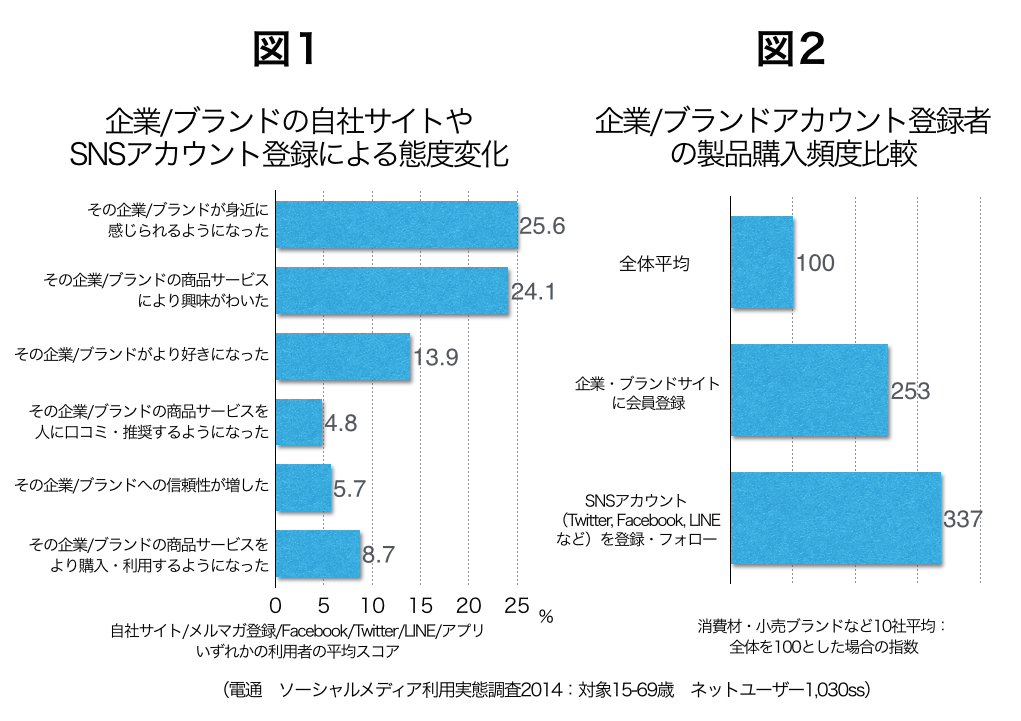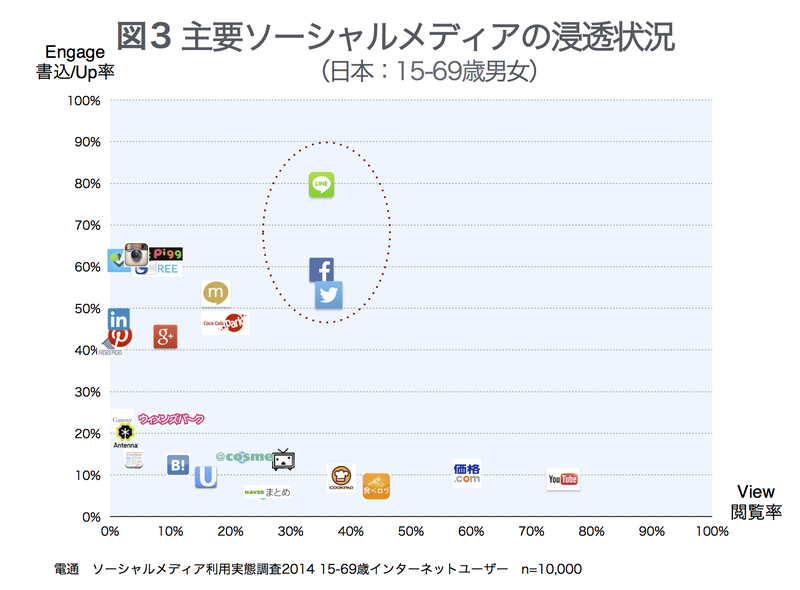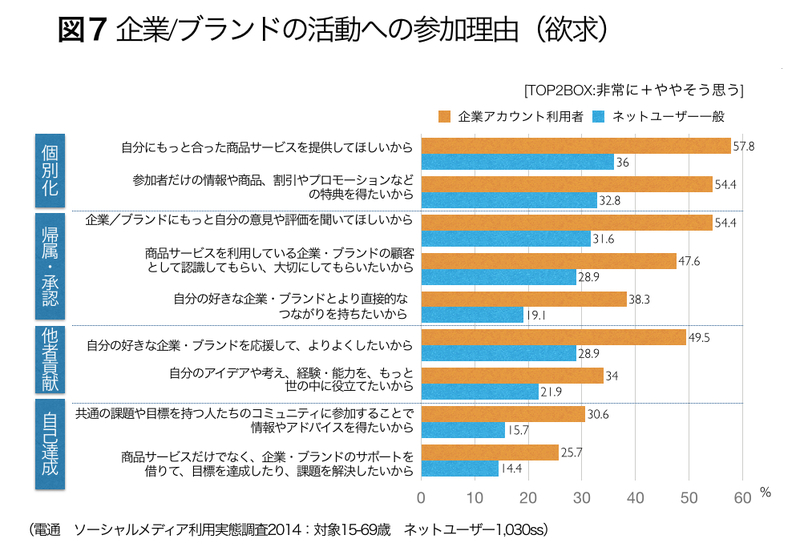Hello. This time, I'd like to explore "engagement," a crucial keyword in brand strategy for the digital age.
While "engagement" is often used to mean bonds, affection, or devotion, the marketing term "consumer engagement" has gained renewed attention in an era where brands connect directly with customers, driven by the proliferation of social media.
Communication activities, which were traditionally short-term and flow-based (like campaigns), have shifted to a stock-based model. This means that once users follow a brand, content is delivered directly and continuously to them through channels like timelines. This shift enables more effective approaches for increasing mindshare and spreading empathy and goodwill (like retweets and likes) through customers' networks.
Furthermore, user reactions (likes, comments) are now quantifiable as metrics like "engagement rate," allowing marketers to capture previously invisible data on brand attitudes and behaviors as intermediate marketing indicators.
However, this brand "engagement effect" differs from direct, short-term sales, presenting the persistent challenge that the impact of continuous investment in building a fan base is difficult to quantify.
Furthermore, recent changes in platform policies, such as those by Facebook, have led to reduced reach to fans, necessitating a reevaluation of engagement strategies centered around SNS.
Here, drawing on findings from a recent survey (Dentsu Inc. Social Media Usage Survey 2014), we will explore the essential meaning of engagement—as "building relationships and bonds between brands and customers"—and its future direction in marketing activities.
Five Key Points for Considering Engagement Strategy (Facts and Implications)
① Connection Itself Generates Brand Lift
First, a fundamental point: direct digital connections between companies/brands and customers contribute to attitude formation—such as familiarity, interest, and favorability toward the brand.
Data shows that subscribers to a company/brand's own website or social media accounts exhibit higher purchase intent and purchase frequency (e.g., for consumer goods). Furthermore, social media subscribers tend to have higher purchase frequency than those following owned media (Figures 1 & 2).
This suggests that it's not just the existing users who are connected; the connection itself can contribute to brand lift effects.

Furthermore, it's understood that brand lift generates a "secondary effect" through multiplication, not only from directly connected users but also when brand activities are shared within those users' own networks. This means it can create a brand effect of N (customers/fans) × N² (the network of customers/fans).
② Develop engagement strategies tailored to the role of the media and the target audience
Engagement approaches with targets and fans vary significantly across social media platforms. Data shows company websites and apps tend to have a higher proportion of brand users, Facebook attracts more brand-favorable audiences, while email subscribers and LINE users often seek exclusive deals or limited-time offers.
Figures 3 and 4 illustrate the penetration rates of major social media platforms using view rates and engagement rates (the percentage of users posting/uploading). Both LINE and Twitter exceed 70% among teens, indicating they can play a central role in engagement strategies targeting younger demographics.
③ Creating brand engagement through emotions and people, not just products
Customers directly connected to the brand tend to hold a higher quality image compared to the general public. Furthermore, beyond just products, there is an opportunity to create strong bonds with the brand through emotion and human connection—such as empathy, connection, the company's mission, and relationships with its representatives (Figure 5).
④ Communicating brand stories and proposing value from the consumer's perspective
Analyzing the correlation between engagement activities and purchase intent across 30 major brands revealed a trend: higher perceived engagement in "communicating the brand's philosophy/story embedded in the product" and "proposing ways to make life more enjoyable and fulfilling" correlated with stronger purchase intent (Figure 6).
Beyond products, activities like content marketing that tell the brand story and propose value from the consumer's perspective are considered effective engagement-enhancing activities that contribute to purchasing.
⑤ Fulfilling consumers' fundamental desire to participate (motivation)
Engagement is not just one-way communication from the brand; it is a mutual relationship built through customer actions (responses) and participation. So, why do consumers want to participate in and take action on brand activities?
Survey results reveal participation motivations such as: ① Personalization (desire for products or benefits tailored to them), ② Belonging/Recognition (wanting their voice heard, to be recognized as customers), ③ Contributing to Others (wanting to utilize their abilities), and ④ Self-Achievement (desire to achieve goals or solve problems) (Figure 7).
Rather than merely encouraging the sharing of information or content, setting activity themes and mechanisms that address these desires, and building bonds through customer participation and action, should lead to effective brand engagement.
For brands to engage with consumers and communities
Traditional CRM (Customer Relationship Management) centered on the closed concept of "customer enclosure," assuming a one-to-one relationship between brand and customer. Engagement, however, is a more neutral concept.
The relationship between brands and consumers has changed significantly alongside the media environment. The proliferation of mobile devices has connected online media with real-world experiences.
Today, brands increasingly need a paradigm shift: how to engage with consumers' lives and communities across diverse touchpoints, including real-world ones, and how to build open, customer-centric networks that put customers at the center to share, co-create, and amplify value.
Today's engagement strategy demands an evolution in marketing strategy itself—one that responds to each individual's timing and desires to co-create brand experiences and value together.
(Continued in Part 6 and beyond)









